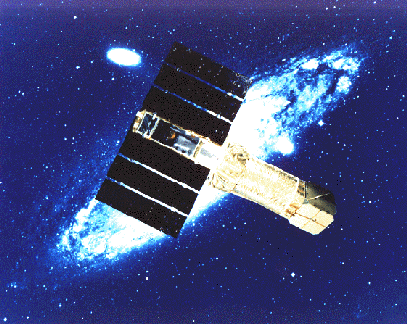Explanation: Today marks the third anniversary of the launch of the Advanced Satellite for Cosmology and Astrophysics (ASCA; renamed from Astro D when launched). ASCA, seen here superposed on galaxy M31, is a Japanese satellite for which NASA has provided some scientific equipment. ASCA carries four large-area X-ray telescopes. At the focus of two of the telescopes is a Gas Imaging Spectrometer (GIS), while a Solid-state Imaging Spectrometer (SIS) is at the focus of the other two. ASCA has provided recent evidence that high energy cosmic rays are formed in the expanding gas from a supernova. During ASCA's three years of operation, it has also yielded valuable data on quasars, supernova remnants, dwarf novae, pulsars, clusters of galaxies, and the mysterious X-ray background radiation that appears to come from all directions.
1999 2000 2001 2002 2003 2004 2005 2006 2007 2008 2009 2010 2011 2012 2013 2014 2015 2016 2017 2018 2019 2020 2021 2022 2023 2024 2025 |
Yanvar' Fevral' Mart Aprel' Mai Iyun' Iyul' Avgust Sentyabr' Oktyabr' Noyabr' Dekabr' |
NASA Web Site Statements, Warnings, and Disclaimers
NASA Official: Jay Norris. Specific rights apply.
A service of: LHEA at NASA / GSFC
& Michigan Tech. U.
|
Publikacii s klyuchevymi slovami:
Observatory - ASCA - rentgenovskii fon - kosmicheskie luchi - kosmicheskaya rentgenovskaya observatoriya - Sverhnovye
Publikacii so slovami: Observatory - ASCA - rentgenovskii fon - kosmicheskie luchi - kosmicheskaya rentgenovskaya observatoriya - Sverhnovye | |
Sm. takzhe:
Vse publikacii na tu zhe temu >> | |
